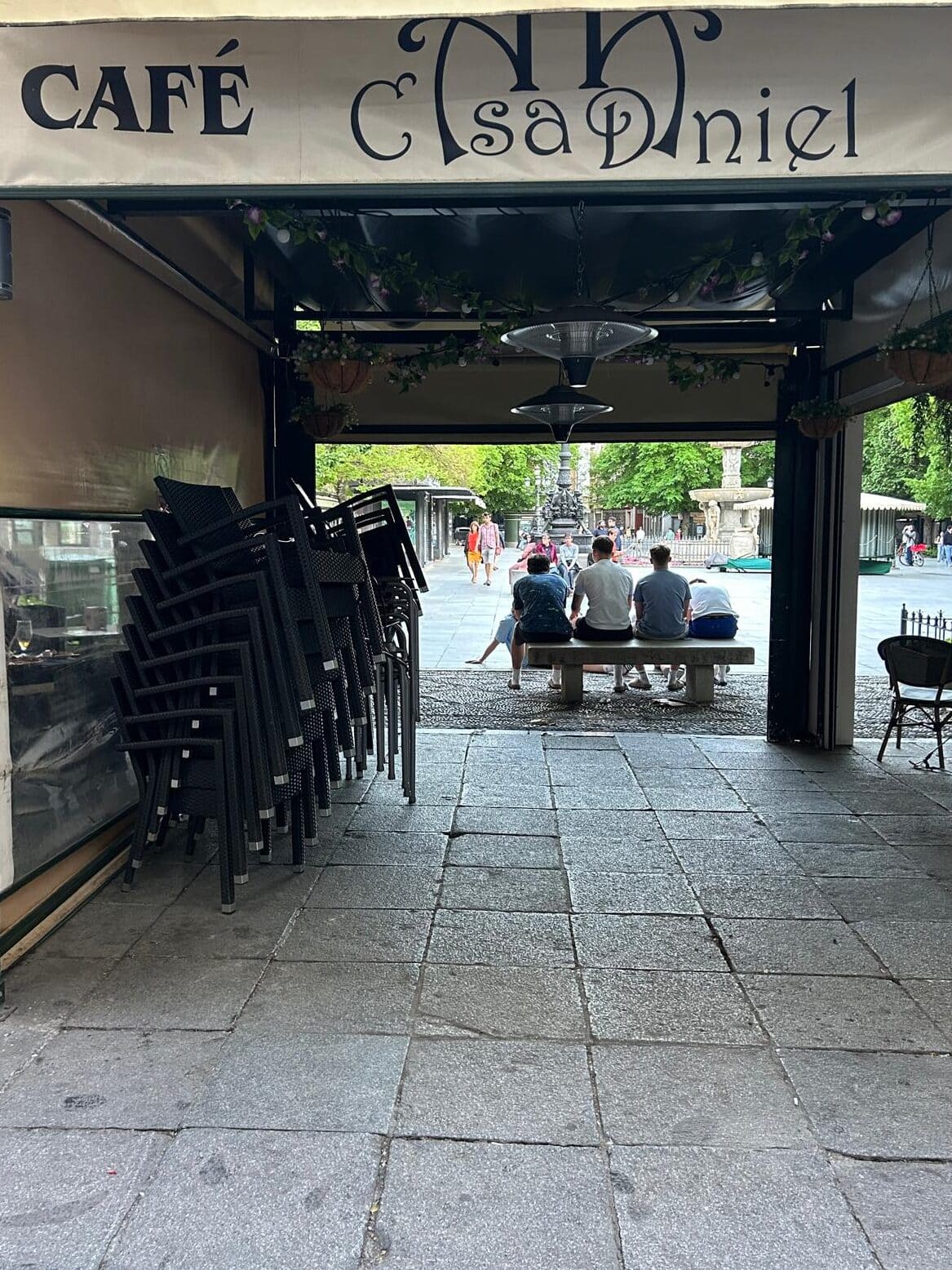
When the power went out earlier this week in Spain, what was at first an almost festive atmosphere among neighbors and shop owners gradually transformed into strain bordering on panic, even in laid-back Granada. The Internet was down and cell service soon became nonexistent. Long lines of people queued up at every available shop, the same look of unease on nearly every face.
People were searching for any kind of information. The conversation on the street went from, “This is Spain,” (“‘Es España, como siempre”) to theories that a cyberattack was underway across Europe.
As a communicator by training, having no information on what was happening and no way to find out was jarring. As an American residing in Spain, particularly one who works in clean energy, I was starkly reminded that the grid is vulnerable anywhere and everywhere.
Whole cities and countries left powerless for hours on end is not just an inconvenience. People were stranded underground in metros, on trains, and in elevators, not to mention the homebound without access to critical health equipment. Spanish news agency EFE reported that authorities were investigating five deaths – including three members of the same family — that may have been related to the blackout.
What’s the answer to power blackouts?
Clean energy is not a tidy, all-encompassing solution to blackouts. Yes, we can and should be turning to energy storage systems for backup power and creating hybrid microgrids for hub-and-spoke resilience. But blackouts call into question the very real and increasingly urgent question of how power gets doled out, by whom to whom? And who’s really in control?
We need to encourage elected leaders and energy-company shareholders that the smart money should be on the smart grid. It’s not just about building more generation, though certainly new power plants will soon be needed (and solar is the quickest to deploy). It’s about developing resilient grids, large and small, that distribute power more efficiently – even immediately – to communities across the area affected.

Unfortunately, we are heading in the opposite direction. Because of DOGE antics, the US Department of Energy will lose 70% of the staff of the Grid Deployment Office, the very people working to support a safe and efficient smart grid. E&E News estimates that 3,500 people will leave the DOE in the coming days and weeks.
What about Texas?
Being from Texas – which is almost 1.5 times the size of Spain, with power needs expected to double in the next six years – I am acutely aware of the politics of energy. In a stunning reversal of business-driven policy, the Texas Senate recently passed legislation to slow down the development and permitting of wind and solar. Oil and gas were not included in this bill.
Texas had just wrested the top spot from California in the race for renewable energy leadership, and that’s a headline the powers that be cannot abide in a state almost synonymous with big oil. Lobbyists from the fossil fuels industry still have the most influence on the legislature and executive branches of government.
But the right to build what you want on your land – including wind and solar – is something that Texans across party lines support.
Until we do something to change the status quo of political fealty to oil and gas, we will be vulnerable to the same kind of blackouts Spain and Portugal experienced. Texans are increasingly experiencing the pain and suffering of energy blackouts during periods of high winter and summer load. (One of the differences between Texas’ and Spain’s energy systems is that Texas now has 11,000 MW of battery energy storage systems compared with Spain’s 60 MW, according to energy expert Doug Lewin.)
And what about climate?
Unless we protect consistent, long-term clean energy policies, we will also continue to see a worsening climate. As Al Gore recently stated, the climate effects we’re experiencing today – the floods, the fires, the drought — is like a “nature walk through the Book of Revelations.” But he also immediately noted that, “the solutions we need to avert an environmental apocalypse are available today—and at lower cost than their fossil fuel alternatives.
This is an important message that all clean-energy communicators can learn from: Never speak only about climate doom and gloom; we must always remind people that affordable solutions are here. Today.
What will change?
Now that the power has returned to the Iberian Peninsula, Spanish Prime Minister Pedro Sanchez has stated that “this cannot happen again in Spain” – and that “the private companies who run things will be held responsible.” Red Eléctrica, Spain’s grid operator has already stated that the cause was not weather related, human error, or a cyberattack. (One senses they’re preparing a “hand of God” or “once in a century” defense.)
The investigation into what happened will take weeks, if not months. But people are demanding answers – now. It will be interesting to see whether grid professionals and governments can get to a definitive conclusion quickly and forthrightly.
The real question is this: Will this devastating event be a catalyst for real action, not just in Spain and Portugal, but in the rest of the world, and specifically the U.S.? Or will national and state political leaders continue to “whistle past the graveyard” until an even more catastrophic blackout hits our shores?



